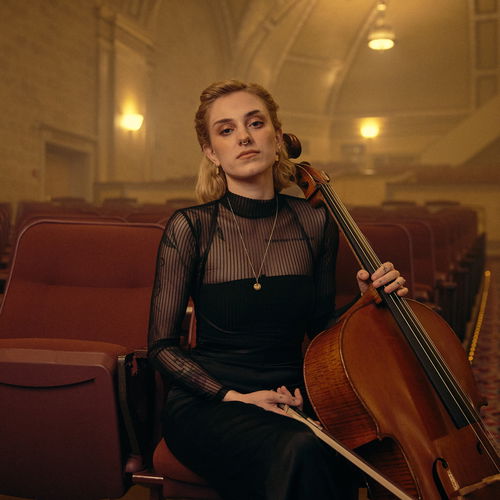Folk and Dance Inspired Duets
Details
Kendra Grittani full profile / Violin and Cello / 2 musicians
Other players: Pauline Kempf
Full program notes
Lullaby for Viola (Violin) and Cello by Rebecca Clarke
Rebecca Clarke (1886-1979) was born and raised in England, to a German mother and an American father, but spent much of her adult life in the United States, claiming both English and American citizenship. In 1907, she enrolled in the Royal College of Music to study composition, the first female student ever to do so.
To support her studies, she began an active performing career on the viola, and in 1912 she became the first woman ever to be hired in a professional orchestra, playing in the Queen’s Hall orchestra. The majority of her music has never been published and remains the property of her estate. The Lullaby and Grotesque for Viola and Cello, published in 1930, shows her English musical influences and her Romantic and early 20th century style.
Duo for Violin and Cello by Jessie Montgomery
Composer, Violinist and Educator, Jessie Montgomery wrote this piece for her friend, cellist, Adrienne Taylor. Each movement shows different characteristics of friendship: laughter, compassion, adventure, and sometimes, silliness. Although this piece employs traditional classical form, it utilizes extended techniques, and a free improvisational form. The Duo was written by Jessie Montgomery in 2015 to be performed with Cellist Adrienne Taylor.
Huit Morceaux pour Violon et Violoncelle, Op. 39 by Reinhold Glière
Despite living long past the middle of the twentieth century, Reinhold Glière owes most of his musical style and inspiration to the Russian Romantic period of composition. Glière's rarely-performed Opus 39 set of eight duos for violin and cello was written in 1909. The Andante-paced Prelude begins with a repeated-note figure in octaves from the violin, while the cello toys with an ominous and fragmented chromatic figure before exchanging ideas with the violin. The Gavotte throws a nod to the french dance suite, with upbeat joyous figures, and a middle section reminiscent of a chorus or bagpipes. Each movement from this suite is reflective of both Russian folk music and French dance styles. Glière successfully captures various landscapes in Europe, from a homey folk village to a vast deserted icy tundra.

 Continue with Facebook
Continue with Facebook
 Continue with Google
Continue with Google
 Continue with Apple
Continue with Apple